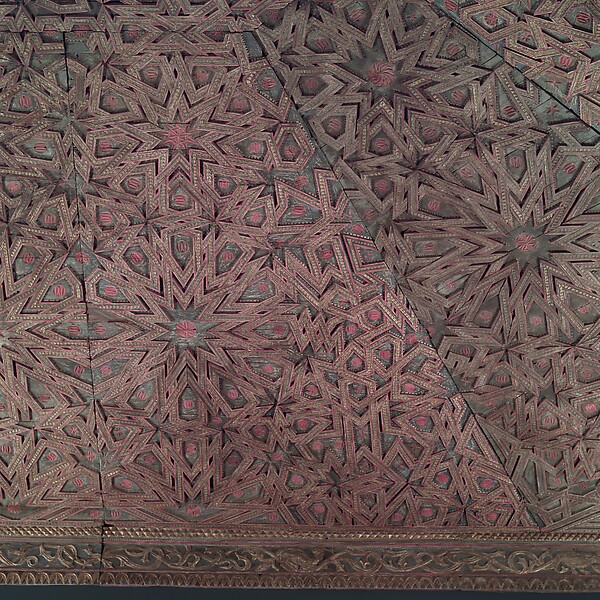Today I was one of a handful of people to engage in an exclusive observatory session regarding a magnificent work of art. The event was one of a series called "The Observant Eye" in which museum guests spend an hour or so discussing a specific item in one of the Met's many exhibits. This event was particularly special because it was only available to Mount Holyoke alumni, which myself and my mother were not. However, we are extremely lucky to be acquainted with a fabulous alum who is also a great Girl Scout leader and friend. Now, back to the picture.
Looking up at the ceiling, you notice a magnificent beauty staring you back in the face. Its intricate gilded patternwork asks you why you didn't notice it in the first place. Upon reflection, you probably never would have realized it was there if you weren't directed to notice it. It doesn't have a name to refer to, so I'll just call it the 'ceiling.'

This piece is originally from 16th century Spain but was donated to the Met by the Hearst Foundation in 1956. However, it has only been available for viewing since November of last year when the exhibit opened its doors after reconstruction. In fact, the room was built specifically for this ceiling which has a rather fascinating history.

First, a little background information. This piece represents the Mudejar style from northern regions in Spain where ceilings like these were most typically found in churches. In traditional Islamic art, figures were not reproduced because organisms (including animals) were not believed to be worthy enough to be depicted alongside deities. However, the border that runs around the ceiling is of flora and fauna which reflects that it was added at a later period than the main portion.
Stay tuned for Part 2 and a story that makes this ceiling truly one of a kind...
For more information, pictures, and the such, click here to be directed to the museum website.
Until next time,
J
No comments:
Post a Comment